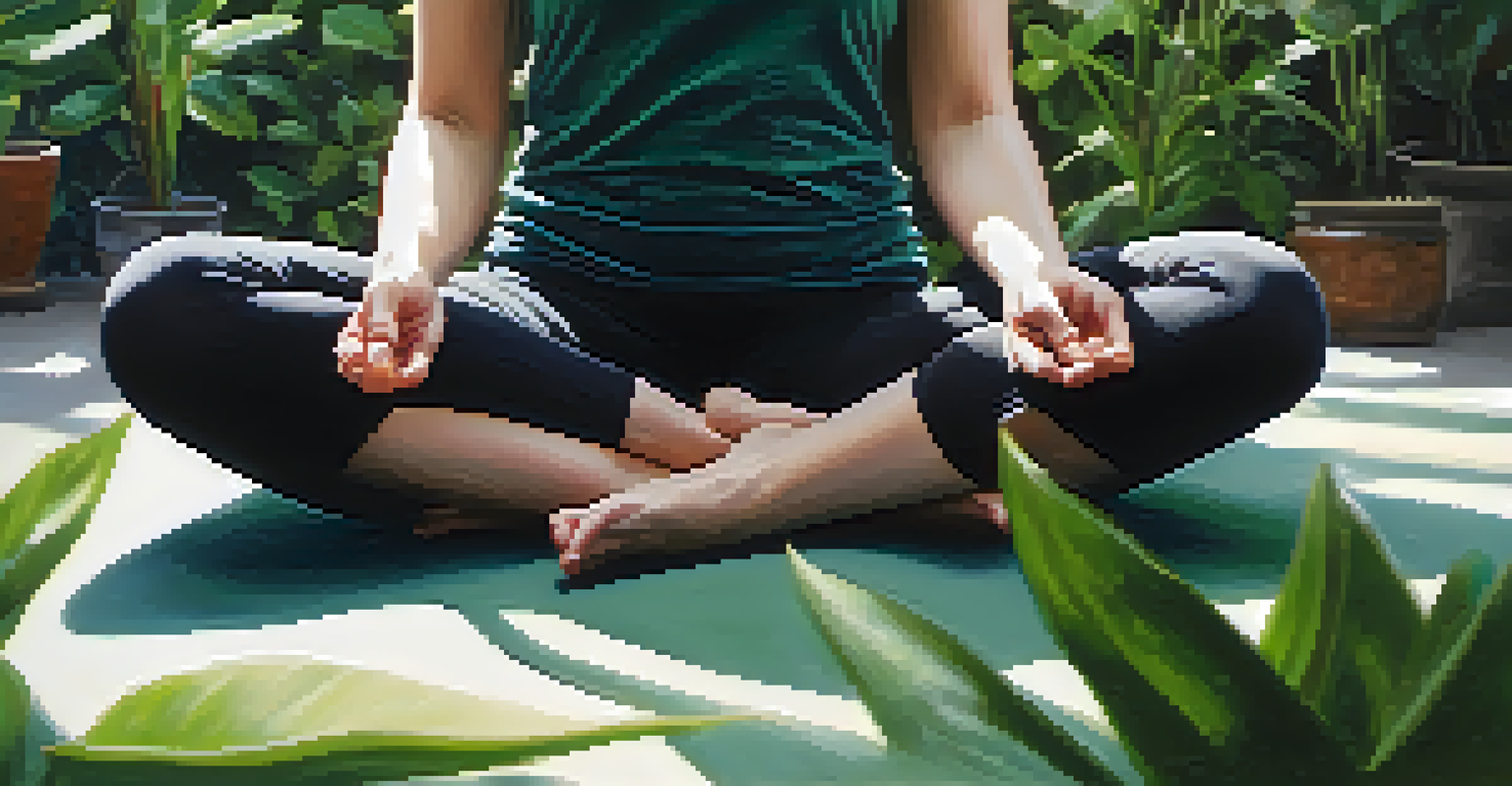Mindfulness in Yoga: A Pathway to Healing After Loss

Understanding Mindfulness in Yoga and Its Benefits
Mindfulness in yoga involves being fully present in the moment, fostering awareness of thoughts, feelings, and body sensations. This practice encourages individuals to observe their experiences without judgment, promoting a sense of calm and clarity. By integrating mindfulness into yoga, practitioners can cultivate a deeper connection with themselves, which is especially beneficial during times of grief and loss.
The mind is everything. What you think you become.
Incorporating mindfulness helps create a safe space for emotional expression, allowing individuals to process their pain. This gentle approach can lead to soothing the mind, helping to reduce anxiety and stress that often accompany loss. Furthermore, the physical aspects of yoga can help release stored tension in the body, facilitating healing from the inside out.
For many, yoga becomes a sanctuary for reflection and healing. With each breath and movement, practitioners can honor their feelings and memories, transforming the yoga mat into a space of emotional release. This unique blend of mindfulness and physical activity offers a holistic approach to coping with grief.
The Role of Breath in Mindfulness and Healing
Breath is a fundamental element in both yoga and mindfulness practices. Focusing on the breath creates a bridge between the mind and body, allowing individuals to anchor themselves in the present moment. This deep, intentional breathing helps calm the nervous system, making it easier to navigate the emotional challenges that arise after a loss.

Practicing breath awareness can also serve as a powerful tool for managing overwhelming emotions. By simply taking a few deep breaths, individuals can ground themselves when grief feels all-consuming. This practice offers a sense of control, helping to redirect the mind from spiraling thoughts to a more centered state.
Mindfulness Enhances Healing
Incorporating mindfulness into yoga fosters emotional awareness and creates a supportive space for processing grief.
Incorporating breathwork into yoga sessions can enhance the overall experience, inviting a deeper connection to the body and mind. As practitioners focus on their breath, they may find it easier to access and acknowledge their feelings, fostering a sense of acceptance and tranquility in the midst of sorrow.
Yoga Poses for Emotional Release and Healing
Certain yoga poses are particularly effective for emotional release, helping to unlock feelings stored in the body. Poses like Child’s Pose, Forward Bend, and Heart-Opening stretches encourage introspection and vulnerability, allowing practitioners to confront their grief. These movements can facilitate a cathartic experience, transforming physical tension into emotional healing.
Yoga is the journey of the self, through the self, to the self.
As practitioners flow through these poses, they may notice a shift in their emotional landscape. The act of moving through yoga can serve as a metaphor for navigating the waves of grief, illustrating that it's okay to experience ups and downs. This understanding can empower individuals, reminding them that healing is not linear, but rather a journey.
In addition to emotional release, these poses also promote physical well-being. Enhancing flexibility and strength can lead to improved overall health, which is crucial during emotionally taxing times. By nurturing both body and mind, individuals can create a more holistic healing experience.
Creating a Mindful Yoga Practice After Loss
Establishing a mindful yoga practice after experiencing loss can be a transformative experience. It begins with setting an intention, perhaps dedicating the practice to the memory of a loved one or to self-compassion. This intention serves as a guiding light, shaping the practice and providing a sense of purpose.
Consistency can also foster a deeper connection to the practice. Whether it’s a daily routine or a weekly class, creating a space for mindful yoga helps in developing a rhythm that honors the healing journey. Over time, this regularity can cultivate a sense of stability amid the chaos of grief.
Breath Connects Mind and Body
Focusing on breath during yoga helps ground individuals in the present, aiding in emotional regulation and healing.
Moreover, it's essential to listen to your body during these practices. Some days may call for gentle stretches, while others may invite more vigorous movement. By being in tune with your body’s needs, you can create a nurturing environment that truly supports your healing process.
The Power of Community in Mindful Yoga
Practicing mindfulness in yoga can be even more powerful when shared with a supportive community. Group classes foster a sense of belonging, reminding individuals that they are not alone in their grief journey. This collective energy can create a healing atmosphere that enhances emotional release and connection.
Being part of a community allows for shared experiences and stories, which can be incredibly comforting. Engaging in group discussions or sharing moments after practice can help individuals feel understood and validated in their feelings. These interactions can ignite a sense of hope and resilience, essential components of the healing process.
Additionally, group classes often provide guidance from instructors who are trained in supporting individuals through grief. Their expertise can offer valuable tools and techniques to navigate the emotional landscape, making the yoga experience even more enriching.
Incorporating Meditation into Your Yoga Practice
Meditation is a natural complement to mindful yoga, enhancing the overall experience. Taking time to meditate allows practitioners to delve deeper into their emotions and thoughts, creating space for reflection. This practice can serve as a powerful tool for processing grief, offering insights into the healing journey.
Incorporating short meditation sessions before or after yoga can help set the tone for the practice. Whether it's focusing on the breath, visualizing healing light, or simply observing thoughts, meditation can help ground individuals in the present moment. This focus can lead to increased clarity and emotional resilience.
Community Supports Grief Journey
Practicing yoga in a supportive community enhances the healing experience by fostering connection and shared understanding.
Moreover, meditation promotes self-compassion, an essential aspect of healing after loss. By cultivating a gentle and understanding mindset, individuals can learn to be kinder to themselves during difficult times. This self-acceptance can pave the way for profound growth and healing.
Embracing the Journey: Mindfulness Beyond Yoga
Mindfulness in yoga can extend far beyond the mat, becoming a lifestyle that fosters resilience and healing. The skills developed during practice can be integrated into daily life, helping individuals navigate their emotions with greater ease. Simple acts, like mindful breathing or being present during conversations, can create lasting changes.
As practitioners learn to embrace mindfulness, they may find themselves more equipped to handle life’s challenges. This newfound awareness can transform how they approach grief, shifting the focus from pain to possibilities for growth and healing. It’s a reminder that while loss is painful, it can also lead to profound self-discovery.

Ultimately, embracing mindfulness as a lifestyle encourages individuals to honor their journey with compassion and grace. It’s an ongoing process of learning, adapting, and growing, allowing space for joy alongside sorrow. This holistic approach to healing creates a pathway to a more fulfilled and meaningful life.